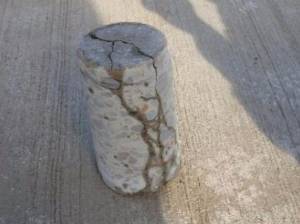Project 0-6687
Minimize Premature Distressesin Continuously ReinforcedConcrete Pavement
Abstract
The long-term performance of continuously reinforced concrete pavement (CRCP) has been quitesatisfactory in Texas, providing an important network of highways with heavy truck traffic and minimalmaintenance. Field evaluations of the performance of CRCP in Texas reveal that a substantial portion ofdistresses is not necessarily due to structural deficiencies of CRCP. Rather, many distresses appear to be due toconstruction and material related issues and to a lesser extent, imperfections in design details. Since thesedistresses occur long before structural distresses develop, they are considered premature distresses. The mosteffective way to prevent or minimize premature distresses is to identify the mechanisms of distresses, developappropriate special provisions to existing specifications or special specifications, and modify existing designstandards. Distresses at transverse construction joints (TCJs) were one of the most frequently observed andefforts were made to identify the mechanisms of those distresses and develop or improve design standards orspecifications. Field evaluations of concrete and steel behavior near TCJs were made using various gages. Theanalysis of the data indicates that the current practice of placing additional tie bars at TCJs, along with poorconstruction practices, are the major causes of the distress. There is a large difference in the behavior ofreinforcement between additional tie bars and longitudinal steel that is continuous through transverseconstruction joints. The premise that additional tie bars at TCJs will behave the same way as longitudinal steel,thus reducing steel stresses of longitudinal steel at TCJs, keeping the joint widths tight, and improving TCJperformance, is not necessarily correct. Also, the use of additional tie bars makes the consolidation of concreteat TCJs difficult due to the reduced spacing between longitudinal reinforcing steel. Not placing additional tiebars at TCJs, and the use of relief transverse saw cut joints near TCJs, along with improved constructionpractices at TCJs, will minimize the distresses.

Project PI: Moon C. Won
Project Co-PI: Tewodros Ghebrab
Research Assistants:
Sureel Saraf
Wesley Kumfer
Pangil Choi
Sungwoo Ryu
Sean Davis
Student Assistant: Seon Cheol
Center for Multidisciplinary Research in Transportation (TechMRT)
-
Address
Texas Tech University, Box 41023, Lubbock, TX 79409-1023 -
Phone
806.742.3523 -
Email
techmrt.outreach@ttu.edu
